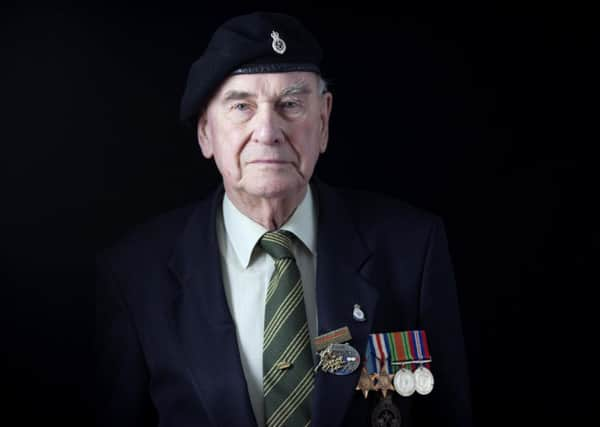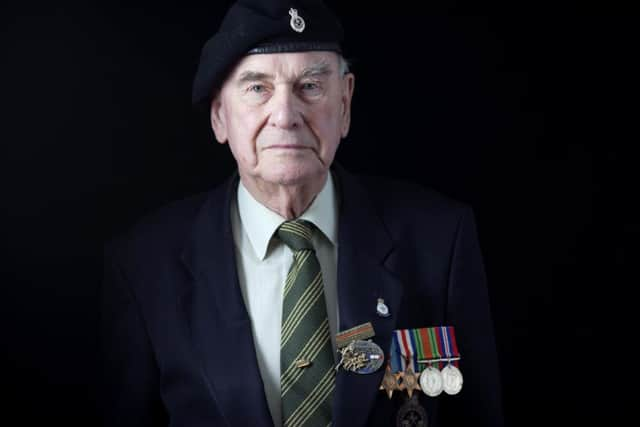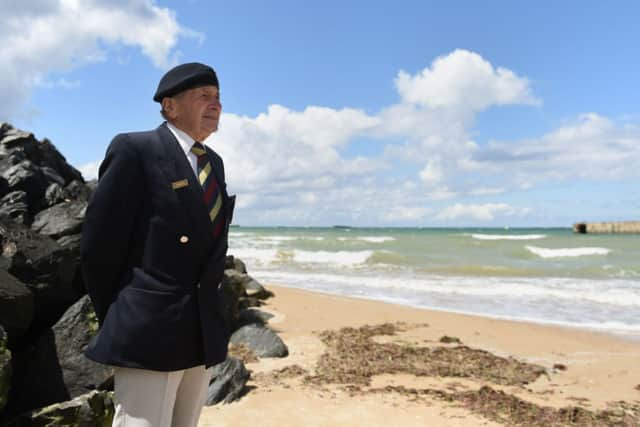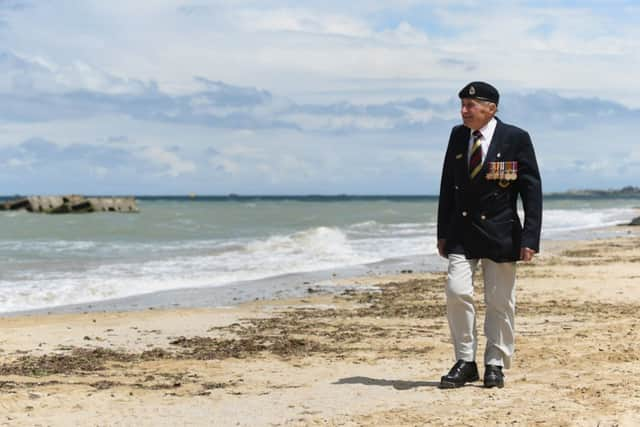Video and gallery: We’ll meet again as D-Day veterans gather 70 years on


Continuing coverage through the day. Please refresh page for the latest version
A huge security operation has swung into operation as 17 heads of state, including the Queen, prepare to arrive in northern France tomorrow.
Advertisement
Hide AdAdvertisement
Hide AdMore than 650 ex-servicemen are said to have travelled to commemorate the invasion which changed history.


Today the Prince of Wales and the Duchess of Cornwall will meet old troops of the Glider Pilot Regiment at Pegasus Bridge, the first assault of the D-Day invasion.
In an incredible feat of flying immortalised in the 1960s film The Longest Day, a team of Horsa gliders silently landed to take the strategically-vital bridge and another nearby.
Led by Major John Howard, they captured the bridges after a 15-minute skirmish, in which two soldiers were killed and 14 wounded.
Advertisement
Hide AdAdvertisement
Hide AdCharles and Camilla will be met at the nearby Cafe Gondree, overlooking Pegasus Bridge, the first building to be liberated from Nazi-occupied France.


They will then walk across Pegasus Bridge and be guided to the Glider Pilot Memorial where veterans and serving members will be lined up.
The visit comes as world leaders, including Barack Obama and Vladimir Putin, arrive in Normandy tomorrow for the 70th anniversary.
An international ceremony will held be at Sword Beach, the easternmost of the five landing areas for Allied forces on D-Day.
Advertisement
Hide AdAdvertisement
Hide AdIn a packed day of engagements today, Charles and Camilla will view power boats involved in the Normandy landings and lunch with veterans at Ranville.


Charles - the colonel-in-chief of the Parachute Regiment - will later witness a commemorative parachute drop by British, American, French and Canadian troops.
Scottish D-Day veteran Jock Hutton, 89, will take part in a tandem jump with one of the Red Devils during the drop at Ranville.
Mr Hutton, who was raised in an orphanage in Bridge of Weir, is one of the last D-Day veterans from his regiment - 13th Battalion of the Parachute Regiment.
Advertisement
Hide AdAdvertisement
Hide AdA midnight vigil will be held at Pegasus Bridge, marking the moment the gliders made their momentous landing to capture the structure.
Troops from 1st Battalion The Rifles and the Army Air Corps will march across the bridge to Cafe Gondree for a champagne toast and a midnight firework display.
• The words “doom”, “debarkation” and “deliverance” have all been suggested as meanings for the “D” in D-Day.
But the letter is derived from the word “Day” and means the day on which a military operation begins.
Advertisement
Hide AdAdvertisement
Hide AdD-Day has been used for many different operations but is most closely associated with the Allied landings on Normandy’s beaches on June 6 1944.
The day before D-Day was D-1 and the day after was D+1.
It meant that if the date for an operation changed, military planners would not have to change all the dates in their plan.
Such a thing happened for the Normandy landings D-Day, which was originally planned for June 5 1944 - but bad weather delayed it by a day.
D-Day vet salutes fallen comrades
One of Ireland’s last surviving D-Day veterans has penned a poignant message to his fallen comrades after being forced to abandon hopes of travelling back for the 70th anniversary.
Advertisement
Hide AdAdvertisement
Hide AdPat Gillen, 89, who was among the first wave of troops to invade Sword beach on June 6 1944, has asked ex-soldiers to lay a homemade wreath at a memorial to commando units on the Saulnier farm near Amfreville where they were holed up for weeks.
On the laurel - decorated with poppies and an Irish tricolour ribbon - he has written a simple tribute: “In memory of all commandos from the emerald island who lie in sleep in Normandy fields. Pat Gillen. Friends and Families 6 Commando”.
Sitting in an armchair in his living room in Cork city, the spirited pensioner clasped his green beret and recalled the treacherous landing, the thunderous noise of planes and battleships and the devastating German artillery and sniper fire.
“The whole thing was to move fast. Not to be an object for the snipers,” he said.
Advertisement
Hide AdAdvertisement
Hide Ad“They used to say ‘if you want to see your grandchildren then get off faster than Jesse Owens’. Seemingly I was fast.”
The rifleman, who was in 6 Commando, a unit tasked with securing the strategically important Pegasus Bridge near Caen, should have been among the 650 ex-servicemen in Normandy this week to mark the invasion that won the war.
“We came up to the bridge and you could hear the bullets pinging off the ironworks, steelworks, and we had a few casualties there. They were all over us. The Germans had been there for four years, so they had good sniping positions,” he said.
With ill-health stopping his return, Mr Gillen asked a group of Irish army veterans to lay the laurel wreath made by his daughter Mary in his place.
Advertisement
Hide AdAdvertisement
Hide AdThe father-of-four and grandfather of 12 had planned to visit the military cemetery in Bayeux and Sword beach and the Saulnier farm where he was holed up for 42 days.
“I feel a certain sense of sadness about it because most of my friends will not be there and I don’t know of anyone else from 6 Commando in Ireland going,” he said.
Mr Gillen had been invited to Normandy as part of the Heroes Return 2 scheme promoted by the UK’s Big Lottery Fund.
Proudly wearing his green Commando Veterans Association jumper, the ex-officer recalled more than half of his brigade were casualties in vicious assaults by German forces.
Advertisement
Hide AdAdvertisement
Hide AdHe was never injured despite, like all commandos, wearing his green beret in a six mile trek from Sword beach to Pegasus through marshland, sniper positions, a bogus minefield and several weeks in the trenches at Saulnier - as long and as wide as a grave but mercifully not as deep.
“I suppose you could say I was lucky, or it was in the book or not in the book,” he said.
“We had to dig in. But what we didn’t know was that the Germans were only 500 yards ahead of us in a green wheat field.
“We had one very bad day, a counter-attack. In the morning about 8am, I think it was June 10 or 12 - the Germans put in a very heavy counter-attack.
Advertisement
Hide AdAdvertisement
Hide Ad“It went on from about 8-11 o’clock. It was very ferocious. We lost a lot, but they lost more. The Germans moved on to 3 commando or 4. They got a bit of a belting and they repulsed their attack but it was one of the bloodiest days ever.”
Mr Gillen’s family has a strong war service record with his father Bill injured three times in the First World War serving with the mounted signals of the Royal Engineers. He completed three tours at the Somme.
The veteran recalled his reaction when he ran away from his Galway home aged 18 to enlist in Enniskillen on Easter Monday 1943.
“There was hell to pay back home, I believe,” he said.
“My father said to my mother I’ll get on my bike and I’ll bring him back, I’ll drag him back and I’ll bring his cousin back as well. My mother said he’s made his bed let him lie in it.”
Advertisement
Hide AdAdvertisement
Hide AdThe cousin he enlisted with, Tommy Cotter, a gunner in the RAF, died in one of the last bombing raids over Berlin, and is buried in Potsdam. Another cousin Eamon Gillen, from Dublin, is buried in Appledorn, Holland.
Mr Gillen was due to serve in Ceylon (Sri Lanka) after Normandy but due to the time spent in northern France he was sent to Antwerp and joined forces crossing the Weser and Aller advancing on Berlin.
He retired from the army following the war after being promoted to sergeant and marks remembrance day at the cenotaph in Cork and has returned to Normandy four times.